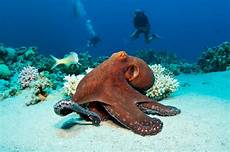Can You Have a Binturong as a Pet?
Binturongs are fascinating and unique animals that have captured the attention of many people. With their distinctive appearance and intriguing behaviors, it's no wonder why some may consider keeping one as a pet. However, before making this decision, it's crucial to understand the complexities and challenges associated with owning a binturong.

Binturong Characteristics:
1. Appearance:
Binturongs are medium-sized animals with long, silky fur that ranges in color from black to gray. They have distinctive white-tipped tails and large, expressive eyes.
2. Habitat and Diet:
In the wild, binturongs are found in Southeast Asia, inhabiting forests and woodlands. They are arboreal animals that spend most of their time in trees. Their diet primarily consists of fruits, leaves, and small animals.
3. Behavior:
Binturongs are solitary creatures that are most active during the night. They are generally shy and gentle, but they can also be playful and inquisitive.
Challenges of Owning a Binturong as a Pet:
1. Legal Restrictions:
In many countries and regions, it is illegal to keep binturongs as pets due to concerns about their welfare and the potential for them to become invasive species.
2. Specialized Care:
Binturongs have specific dietary and environmental needs. They require a carefully formulated diet that includes a variety of fruits, vegetables, and protein sources. Additionally, they need access to a large enclosure with plenty of climbing space and vegetation.
3. Temperament and Behavior:
While binturongs can be gentle and affectionate, they are also known for their independent and solitary nature. They may not always be interested in interacting with humans and can become stressed or anxious when handled excessively.
4. Veterinary Care:
Finding a veterinarian who has experience with binturongs can be challenging. These animals have unique health needs, and specialized medical care may be required.
Alternatives to Owning a Binturong:
1. Visiting Wildlife Sanctuaries or Zoos:
Instead of keeping a binturong as a pet, consider visiting wildlife sanctuaries or zoos that house these animals. This allows you to observe and learn about them in a controlled environment.
2. Supporting Conservation Efforts:
Organizations dedicated to binturong conservation offer opportunities to contribute to their protection and habitat preservation through donations, volunteer work, or educational programs.
3. Documenting Binturongs in the Wild:
If you're passionate about binturongs, consider traveling to their natural habitats and engaging in wildlife photography or research projects that contribute to scientific understanding.
Conclusion:
While binturongs are fascinating creatures, keeping one as a pet is not advisable. The legal, ethical, and practical challenges associated with owning a binturong outweigh the potential benefits. Instead, it is more responsible and rewarding to appreciate and protect these animals in their natural environments.
Declaration: All article resources on this website, unless otherwise specified or labeled, are collected from online resources. If the content on this website infringes on the legitimate rights and interests of the original author, you can contact this website to delete it.





